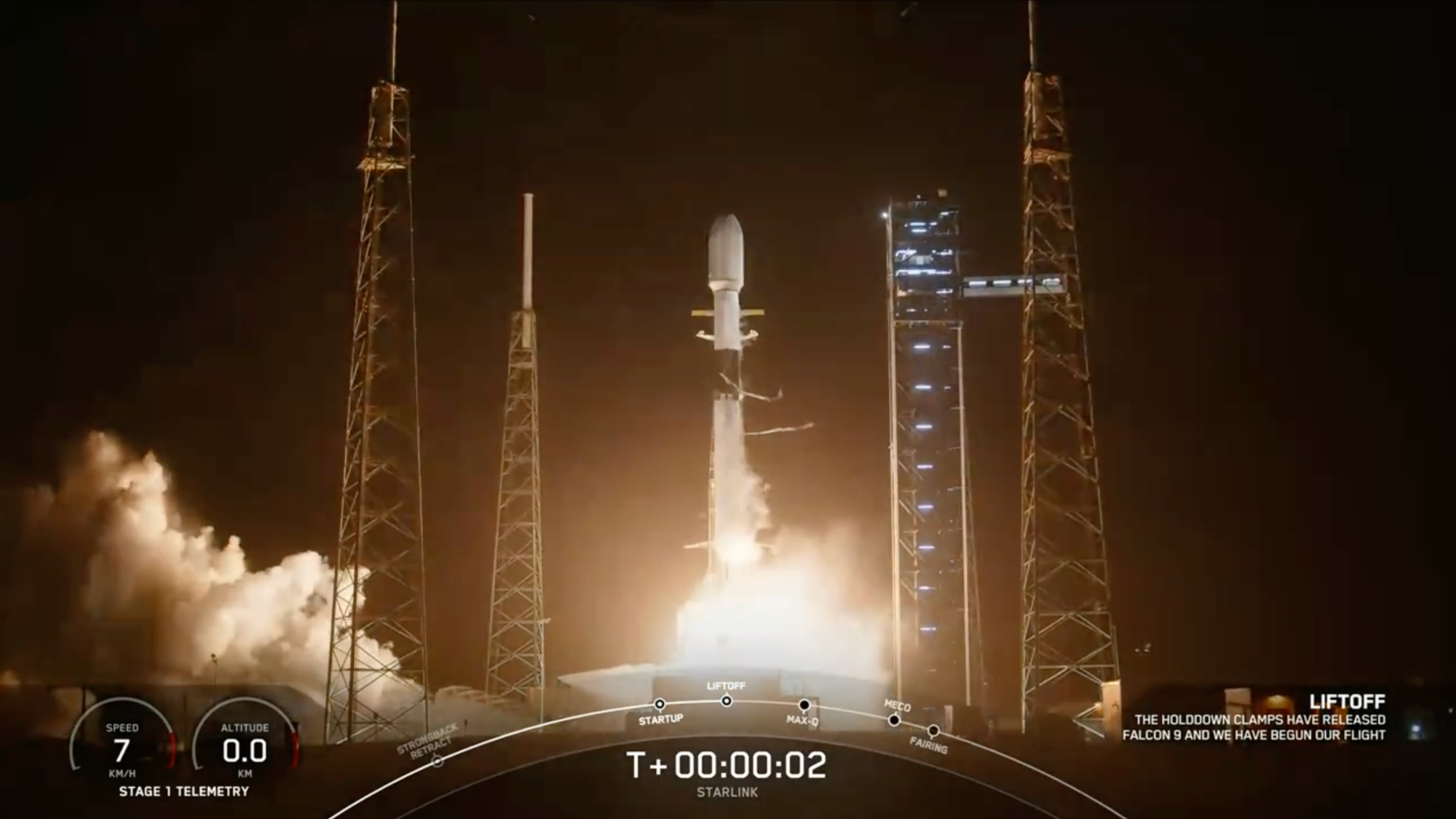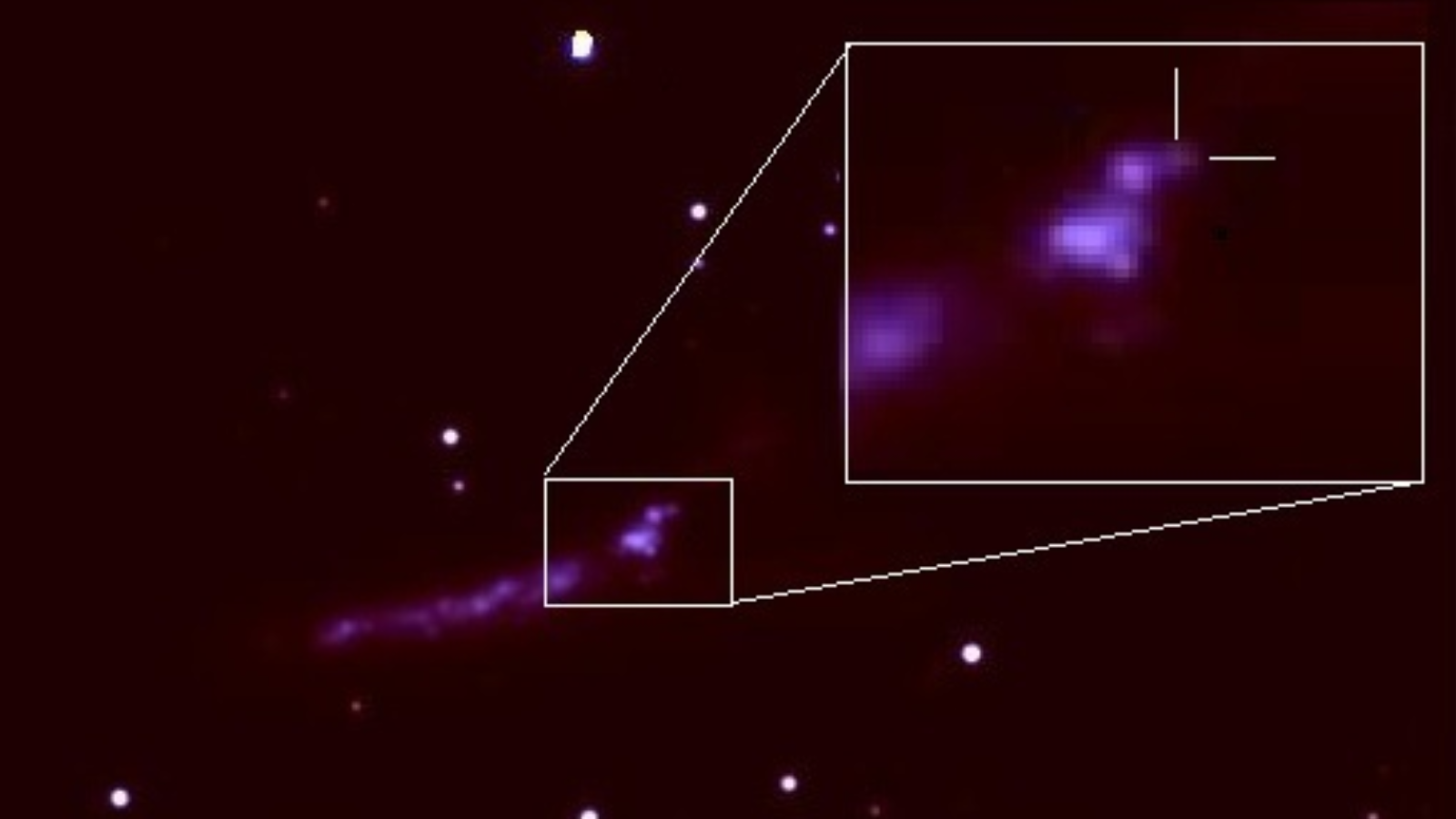SpaceX launches 23 Starlink satellites in nighttime liftoff (photos, video)
SpaceX launched another batch of its Starlink internet satellites to orbit early Wednesday morning (April 10).
A Falcon 9 rocket carrying 23 Starlink spacecraft lifted off from Cape Canaveral Space Force Station in Florida on Wednesday at 1:40 a.m. EDT (0540 GMT).
About 8.5 minutes later, the rocket's first stage came back to Earth, touching down at sea on the SpaceX droneship Just Read the Instructions.
Related: Starlink satellite train: How to see and track it in the night sky

It was the second launch and landing for this particular booster, according to a SpaceX mission description. Its lone previous liftoff sent SpaceX's four-astronaut Crew-8 mission toward the International Space Station on March 5.
The Falcon 9's upper stage, meanwhile, continued hauling the 21 Starlink satellites toward low Earth orbit (LEO). The spacecraft will be deployed in LEO 65.5 minutes after liftoff, if all goes according to plan.
SpaceX has now launched 36 orbital missions in 2024. Two-thirds of those flights have been devoted to building out the Starlink megaconstellation, which currently consists of nearly 5,700 operational satellites.
Breaking space news, the latest updates on rocket launches, skywatching events and more!

Michael Wall is a Senior Space Writer with Space.com and joined the team in 2010. He primarily covers exoplanets, spaceflight and military space, but has been known to dabble in the space art beat. His book about the search for alien life, "Out There," was published on Nov. 13, 2018. Before becoming a science writer, Michael worked as a herpetologist and wildlife biologist. He has a Ph.D. in evolutionary biology from the University of Sydney, Australia, a bachelor's degree from the University of Arizona, and a graduate certificate in science writing from the University of California, Santa Cruz. To find out what his latest project is, you can follow Michael on Twitter.

